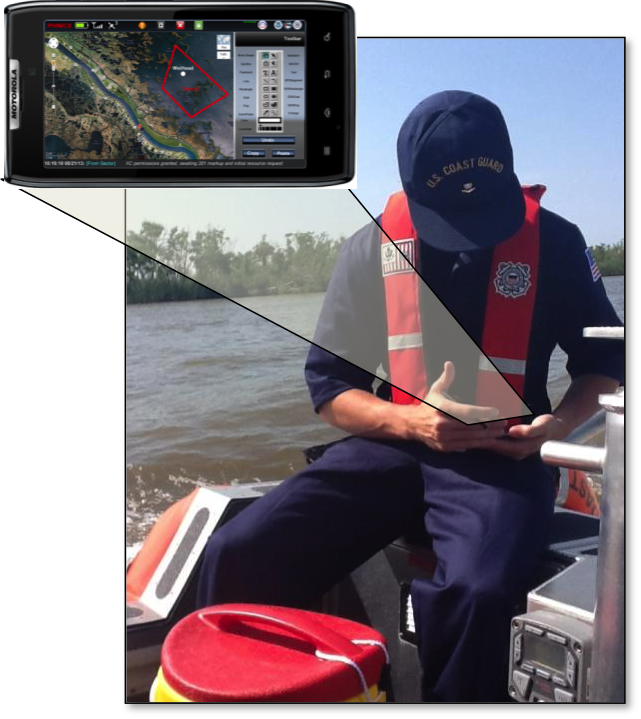Lincoln Laboratory honored for providing access to technology for disaster response

Lincoln Laboratory, sponsored by the U.S. Department of Homeland Security Science and Technology Directorate (DHS S&T), developed the Next-Generation Incident Command System (NICS) to provide situational awareness for widely dispersed emergency responders. The NICS team worked with the California Department of Forestry and Fire Protection (CAL FIRE) to identify the requirements for such a system and to demonstrate its utility. The resulting web-based command and control environment facilitates collaboration across diverse agencies that are responding to disasters. Since early usage of the system by CAL FIRE in 2011, the Lincoln Laboratory team has sought to make this system broadly available. For its success in transitioning NICS to multiple agencies worldwide, the Laboratory received the 2018 Excellence in Technology Transfer Award from the Federal Laboratory Consortium for Technology Transfer (FLC), Northeast Region.
"It is tremendously gratifying to see the disaster response technology we developed at the Laboratory get into the hands of such a broad responder community. The Laboratory's Technology Contracts Office overcame a host of legal, contractual, and political obstacles to enable technology transfer that has resulted in NICS' becoming operational in Australia and California, and most recently in a development effort with NATO for multinational civil responder coordination in the Balkans," said Gregory Hogan, a lead developer of NICS and an associate leader in the Laboratory's Advanced Sensors and Techniques Group.
NICS, which has been used by CAL FIRE to respond to wildfires, mudslides, and floods, was transferred in 2015 to the California Office of Emergency Services. Renamed SCOUT, the system supports emergency responders and law enforcement officials statewide. The State of Victoria, Australia, adopted NICS in 2014 to facilitate their preparations and responses to emergencies such as bush fires and floods. NICS spawned a California startup company, the Worldwide Incident Command Services, which received a license for the system's software code in early 2015. The Laboratory also worked with DHS S&T to release the code base to an open-source repository (Github) in late 2015. Technical enhancements to the system to support humanitarian efforts were developed in collaboration with the Department of Defense. In partnership with NATO, the Laboratory in 2016 began conducting a four-year pilot program to adapt NICS for multinational civil responder coordination in the Balkan nations.
At a time when the emergency management community faces natural disasters that continue to grow in frequency, complexity, and scale, real-time situational awareness and the ability to rapidly share information among dispersed responders is necessary for saving lives and property.
"NICS has become an important tool for responder communities because it helps responders quickly get the information they need to make time-critical tactical and strategic decisions. NICS has also enabled a new mechanism for real-time collaboration, which allows responders to work through operations together no matter where they’re physically located," said Adam Norige, associate leader of the Laboratory's Humanitarian Assistance and Disaster Relief Systems Group.
Because NICS has shown to be a solution to the problem of coordinating these complicated crisis management scenarios, it has already spread to thousands of users across hundreds of emergency response agencies. This widespread use is not only driving improvements to the system but also promoting transfer of the NICS tools to more responder organizations.
The FLC was established in 1974 to promote the transfer of technology developed by federally funded R&D organizations. More than 300 federal laboratories, facilities, research centers, and their parent agencies make up the FLC community. FLC provides services and educational resources to help support the efforts of its members to make available new technologies that benefit the U.S. military and the public.